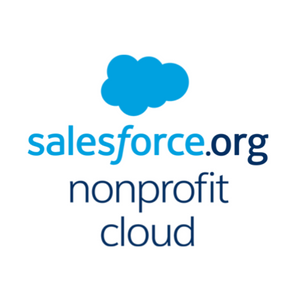Insights
INSIGHTS
All Topics
The best volunteering ideas for 2022
21 Jan 2022by Christine Chiu
Put some pizazz into your volunteering roles. Here are just a few great ideas to liven up your volunteer workforce
Digital volunteering opportunities don’t have to be mundane or meaningless. In fact, they can be exciting and crucial to the success of operations. Here, we cover the top ten virtual volunteering ideas for your audiences.
Website auditing
Ask your volunteers to find holes in your website, bio links, and social media accounts. You’ll want to circulate a list of errors to look for including broken links, missing images, and duplicated content. Gather feedback on how easy it is to navigate your site.
Check for accessibility
Similar to website auditing, ask virtual volunteers to check for website and content accessibility. At Charity Digital, we’ve highlighted how accessibility laws have changed, so you’ll want to ensure that everything is up to date. Digital volunteers can review content at home and look for fonts that are too small or content without accompanying captions.
Digital mentorship programmes
For charities with ongoing programmes, online mentoring goes a long way to helping underprivileged young people. The Brightside, a charity working with teens under 16, has volunteers inspiring its beneficiaries. Online mentors chat and offer advice through a platform. Going remote, they can also respond from any device. If you have an existing mentor programme, including a virtual component makes sense.
Comfort from an online volunteer
One of the best ideas for virtual volunteers is offering advice and support by phone or online. Age UK’s digital buddy programme is an online advice line that helps older people with tech problems. Volunteers meet with their ‘clients’ via Zoom, and take off from there. Age UK also offers a telephone friend service, where friendships can be made via phone conversations.
Charity guest blogs
Virtual volunteers may also be valuable when creating digital content. Guest charity blogs are a great way to engage volunteers directly from their homes. Invite authors to share inspiring stories, opinions or to write feature thought pieces. Dementia UK showcases its work by having beneficiaries share their experiences. The guest blog also publishes advice from local advocates.
Social media volunteer
Appealing to the younger generation, social media volunteering is an opportunity to manage a charity’s accounts. Done online, the role includes promoting charity campaigns and advertising unpaid roles. Oxfam offers social media volunteering roles. They ask that volunteers be responsible not only for maintaining social media accounts, but also aspects of digital strategy. The benefit here is mutual – volunteers get valuable work experience while Oxfam receives operational help.
Give a digital lesson
Most volunteers are motivated by the impact they have on who they help. For charities in the education sector, online learning and support is a chance for volunteers to share knowledge. Bookmark, a reading charity, has volunteers read and play games with children with literary challenges. Readers choose a time that works for them, and they then read to children in 30-minute segments.
Recruit digital ambassadors
Within your group of social media followers, there may be individuals who want to serve as digital ambassadors. The owners of these social media accounts act as your mouth piece for the brand, events, and digital fundraising causes. While some charities have chosen to appoint platform celebrities, everyday volunteers can also be digital ambassadors. Be strategic about your choice, and choose people within an audience segment you’re looking to tap into.
Email pals
Another way to help charity beneficiaries is through email support. Digital volunteers are paired with those in need, and emails are exchanged through a secure platform. Beat, a charity combatting eating disorders runs an email exchange programme to support sufferers. The charity matches volunteers with beneficiaries and asks volunteers to support by writing emails several times a week.
Help with charity operations
Audiences can be a key part of the charity mission and research. Missing Maps, is a charity helping to pinpoint vulnerable populations. The charity asks volunteers to locate those in need, so that aid groups can better assist.
Volunteers use OpenStreetMap to upload locations. Next, community volunteers add details including aid or evacuation centres. Last, humanitarian groups use the information to provide disaster relief. For charities using crowd sourcing in their operations, unpaid staff can be the key to success.
Christine Chiu
More on this topic
Recommended Products
15 Jan 2025by kirsty marrins
AI and the future of service delivery
14 Jan 2025by Josie Sparling
How digital access challenges impact charities and service users
13 Jan 2025by Ioan Marc Jones
An A-Z glossary of service delivery terms and definitions
Our Events
Charity Digital Academy
Our courses aim, in just three hours, to enhance soft skills and hard skills, boost your knowledge of finance and artificial intelligence, and supercharge your digital capabilities. Check out some of the incredible options by clicking here.
















